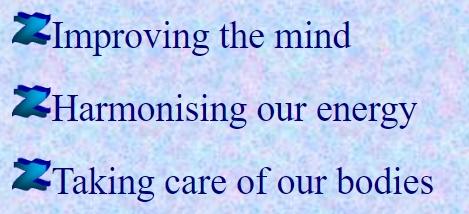|
ZANDTAOMED MANUAL
Email Zandtao:- |

|
ZANDTAOMED MANUAL
|
|

|
|
|
Introduction One thing that you can know about the path is that it is always changing – developing; nothing more so than the way the pathtivism manual progressed. At the end of the Treatise (Ch 21-25) I came up with pathtivism,  and at the time I saw it as relevant to a few activists who might perceive a spiritual side and would be willing to marry the spiritual and political in activism. In the first section of Outer Engagement I began by examining this until it became transparent that this marriage is essential – whether you call it pathtivism or not – if we are going to address the malaise that is now being experienced by society because of the ineffectiveness of the (genuine) left political activism. People regularly discuss narrative. I question this discussion. There have been many excellent analysts who, in my view, have accurately described the narrative. However what good has correctly describing the narrative done? If we examine the political situation now, we see a dangerous lurch to the right, and whilst the narrative continues to be tweaked and be accurate it is not affecting this dangerous lurch. One particular significance about this lurch is that people are listening even less. Individuals are listening to their "own media", their own narratives, and are not willing to listen to different narratives - they certainly are not willing to listen to a different narrative and be informed by this. So whilst the narrative is of course important, it does not address for me the real political issue, as well as being the real human issue, in activism how are we dealing with this financed problem of less-listening? What is preventing this listening? Around there is an increasing ego, an arrogance that is committed to their own narrative - irrespective. And how are we dealing with this newly entrenched ego? We are not. There are many great activists whose analysis is far sounder and more pertinent than mine, whose narrative is much more accurate, but they do not address ego. I suggest that without consideration of the problems of ego, the movement will remain stuck – or worse – as at the moment they are losing to the populist right. But whilst ego is an essential part of the problems within the movement, being aware of the ego is not the only aspect of path, and I haven’t described the book as being about a movement called “Ego-awareness”. This book is about pathtivism so I will answer why pathtivism is something worth developing. As the book developed the importance of a particular political awareness that I associate with the path grew, and it was an awareness that I had not given sufficient priority to in my own activism - Gaia. Following the path ultimately leads to Unity - being Gaia. From my point of view - being dispossessed - my spirituality (path) was never sufficiently connected to Gaia, not to the depth of recognising Gaia-conscious activism as the priority. Pathtivism by its very nature must be Gaia-conscious, and the implications of dispossession and Gaia-consciousness will be developed throughout the manual. At this point I wanted to describe an inner search, to help activists go inside to determine their own paths – maybe the path of pathtivism. This is where the path took over the direction of the manual. Having established a Gaia-conscious activism the path directed me to integrate Gaia-consciousness. In the Treatise, learning was based on developing the 3 tenets because I felt (and feel) that different activities in life focus on one of the tenets to the exclusion of others:-  But if you look at the Treatise there is very little on energy or emotion. Prior to the Summer of 2019 I followed the outer engagement but through a powerful process of integrating the energetic part of me (Summer 2019) and integrating the 3 tenets within Gaia-consciousness, I have been able to provide a powerful integrated approach to the Inner Search leading to the Integrated Path of section 3. And the Integrated Path had a conclusion for activism that is almost the antithesis of the original purpose of the Pathtivism manual …. yet inevitable. I began this book with a very shaky remit given that I am retired and out of touch living in Thailand. Whilst this gives me sensible detachment it does not give me a current activist’s understanding about the way the movement is functioning at the moment. However that detachment enables a view that is not coloured by the fear and anger that is part of immersion in daily life, a fear and anger fuelling an appalling polarisation that has been financed by the 1%-satrapy. Whilst where this book leads is inevitable and for many unpalatable, to me it is valid. It has to be valid that path is nature – Gaia. Originally the manual was aimed at educating people about the power of their egos and the way in which they are being manipulated socio-politically, this could be a definition of political awareness. The manual was intended to show how even in the struggle we are conditioned and controlled, and how much we are destroying the struggle through ego and the lack of spirituality. Activism – the struggle - is our duty, this is a spiritual awareness that far too many people do not have because they are struggling with their egos. Activists recognise this duty – even though they would not express it in such terms, but because they are not spiritual they do not address spiritual issues such as the question of ego thus damaging the effectiveness of their activism. And where does this duty come from? Gaia. This answer might be interpreted as “saving the planet”, a fundamental for any activist now, but it actually means far more than that for pathtivism. But as I develop pathtivism the focus changes, what started as using the path to reinforce activism changed. Whether activists go with the changes raised in pathtivism is up to them, but by following their own paths through an inner and outer journey they will become better equipped to cope with the increasing power of the 1%-satrapy. A robust activist would need to be able to answer anything that arises in the pathtivism manual, can s/he answer by any means other than emotional rejection? Through an examination of outer engagement and exploring an inner search, the pathtivism manual develops an integrated path – with inevitable conclusions. I hope you can engage with the journey of the pathtivism manual to strengthen activism. Next/Contents |